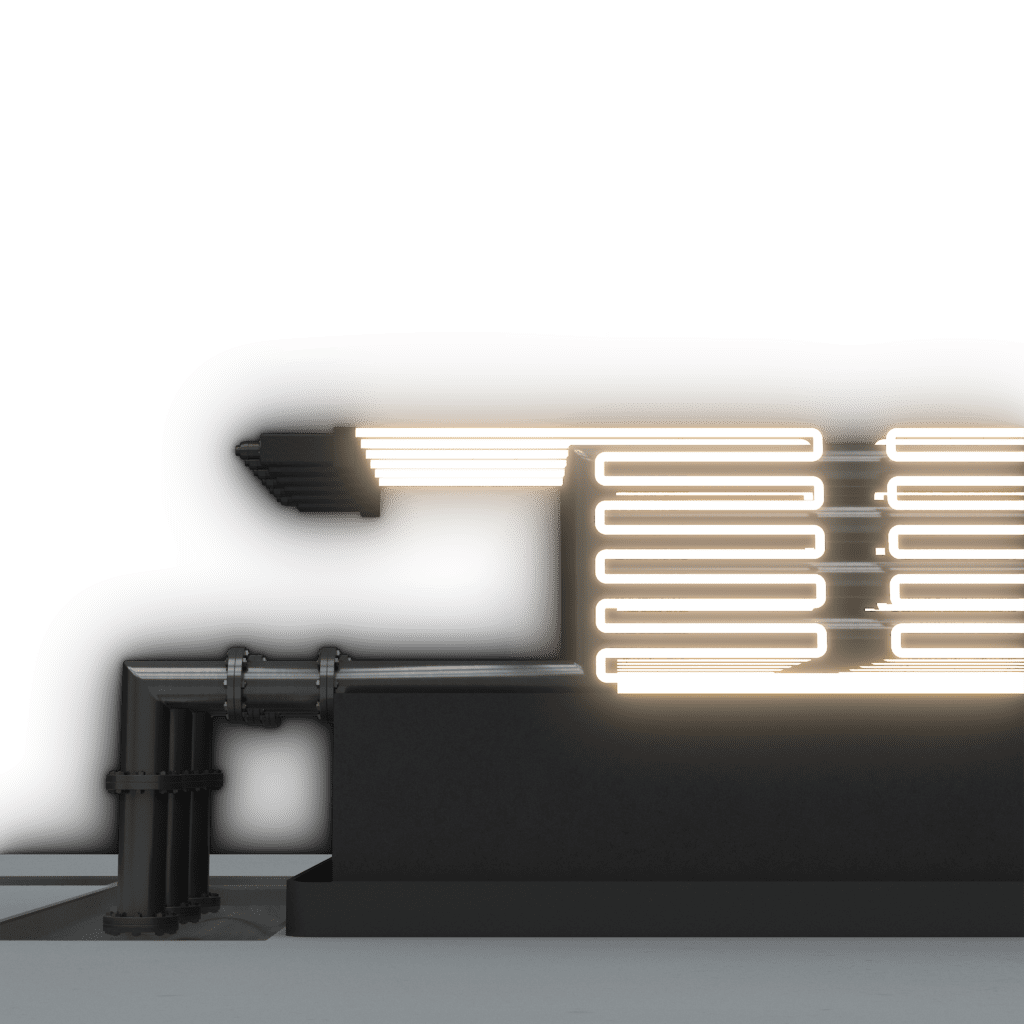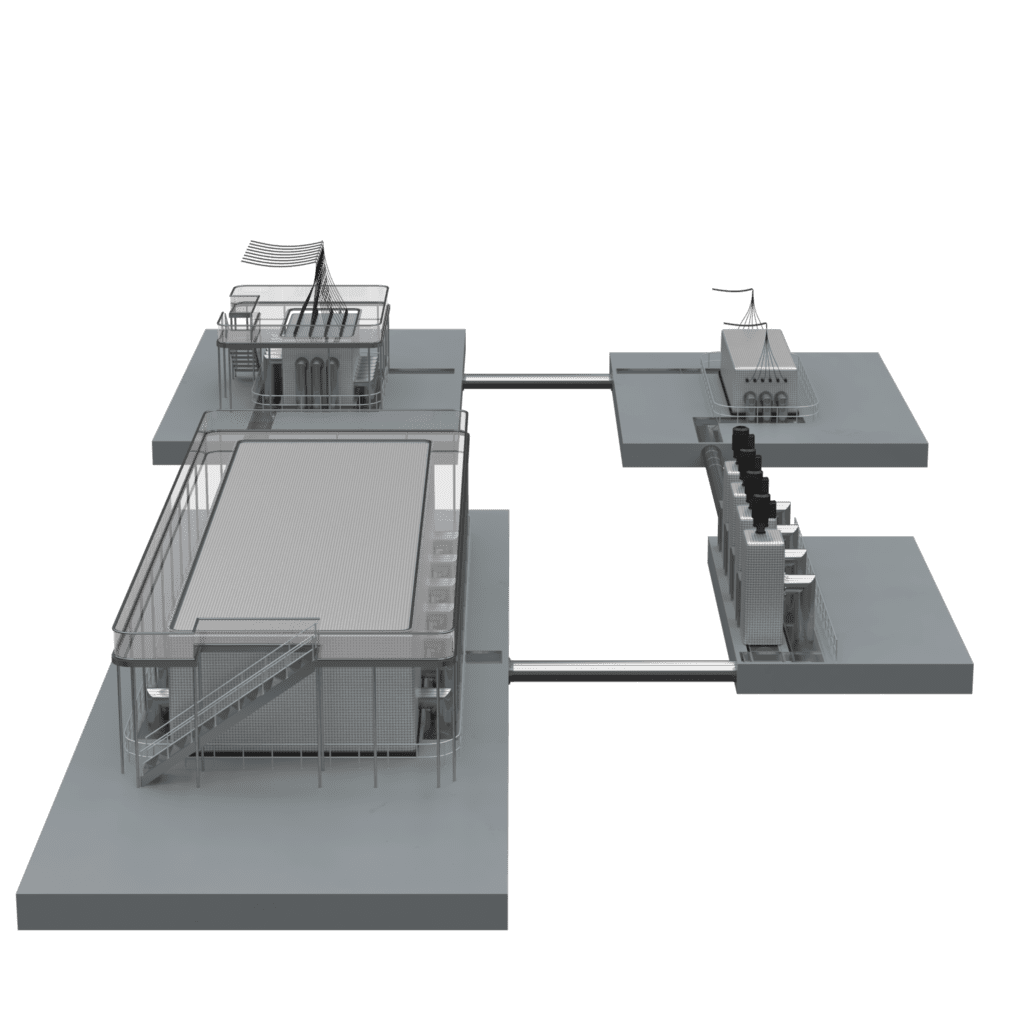Bill Gates-Backed Group Supporting New Energy Storage Technology
A Massachusetts-based group developing an energy storage system to support renewable energy resources is moving forward with plans for a prototype facility outside Boston.
Fourth Power on Dec. 12 said it received $19 million in funding to help scale its technology, which the company said is more cost-effective than lithium-ion (li-ion) batteries and will provide higher power density. The group on Tuesday said its technology can help solve issues with the intermittent nature of power generation from renewables such as solar and wind. The company said its “thermal energy storage technology uses renewable energy to heat carbon blocks to temperatures so hot they glow like the sun,” and then later releases that heat “on demand to the grid as electricity.”
The investment round was led by the venture capital firm DCVC, a San Francisco Bay Area-based group that provides capital for companies in the high-tech sector. Other investors include Breakthrough Energy Ventures (BEV), founded in 2015 by former Microsoft CEO Bill Gates, and the Black Venture Capital Consortium, a group representing HBCUs (historically black colleges and universities).
Arvin Ganesan, Fourth Power’s CEO, told POWER his group believes strongly “that any new technology needs to make the grid more reliable, cleaner and cost-effective. The way that our technology is designed allows us to ‘grow with the grid.’ Instead of building large batteries that don’t create immediate value for ratepayers and grid operators, we’re able to meet today’s needs and modularly grow into tomorrow’s. That fundamental approach, which is built on the technology we’ve worked on for the last 10 years, differentiates us from other battery technology.”
Fourth Power said its system’s cost is lower than other energy storage systems because it uses “readily available and less-expensive materials … enabling energy storage that is 10 times cheaper than lithium-ion batteries.” Ganesan said his company’s batteries “are built from materials that do not have a difficult supply chain. By avoiding the need to procure minerals like lithium, we are able to scale.”
Funding Supports Prototype
The investment announced Tuesday will allow construction to begin on a 1 MWh-e prototype site that could be completed as soon as 2026. The company said its technology (Figure 1) eliminates fire risk and chemical degradation, and would allow for both short- and long-term durations for thermal energy storage.

“Our vision has always been to tackle climate change by making renewable energy—which is the most cost-effective form of power—a reliable resource for the grid to use at all hours of the day,” said Ganesan. “We need utility-scale energy storage that can grow with the grid to make this a reality on a global scale. With the support of our investors, Fourth Power will accelerate our mission and reshape the clean energy landscape by making grid-scale thermal battery storage the most cost-effective solution for power production. We are energized by the opportunity to create a better, more sustainable future.”
Energy industry analysts have said that developing energy storage technologies that can store and then dispatch electricity as needed from renewable energy resources is key for continued growth of renewables.
“Energy stakeholders are sending clear market signals that there is robust demand for li-ion battery alternatives,” said Jorg Heinemann, CEO of EnerVenue, an energy storage solutions group. Heinemann told POWER, “The grid needs storage technologies that improve safety, are more durable, last longer, and can provide greater flexibility beyond today’s 2- to 4-hour applications. As the energy transition advances, it is becoming clearer that alternative technologies can provide more specialized value to the stationary storage market. With that value, we will see improved grid service, reliability, and ultimately lower costs for energy consumers.”
Energy Storage Investment
A report from Reuters Events, released Dec. 11, said increasing power generation from renewable resources and rising use of electric vehicles will make energy storage a priority for investors in the coming years. The report said storage technology will continue to play a major role in the energy transition as cleaner energy replaces fossil fuels.
Respondents to a survey of hundreds of energy industry professionals earlier this year said “energy storage will become the priority technology in 2024-2026,” with 43% of respondents “stating that their organization planned to invest in the technology within the next three years,” according to Reuters.

The U.S. Energy Information Administration (EIA), along with the renewable energy industry, has said building energy storage to enable more dispatch of renewable energy resources is important to continued growth in the clean energy sector. Curtailment of renewable energy dispatch is a particular problem in regions with significant solar and wind generation, as the amount of electricity produced may exceed grid capacity or customer demand for electricity during certain periods.
The industry often points to California as a state where having the ability to store that excess energy, and dispatch it as needed, is of great importance. The California Independent System Operator (CAISO), which manages the state’s power grid, said it curtailed more than 2,450 GWh of solar and wind output in 2022, equivalent to 10% of the state’s monthly power consumption. EIA has said 8,950 GWh of renewable energy output was curtailed nationwide last year.
The EIA in a November report said that as of September of this year, CAISO had curtailed more than 2.3 million MWh of wind and solar output. Solar power accounted for 95% of the energy curtailed last year, and 94% of the energy curtailed during the first seven months of this year so far this year, according to EIA.

The problem of curtailment of renewable energy also is a problem in other countries, include across Europe. Francois Le Scornet, president and senior market intelligence consultant for France-based Carbonexit Consulting, recently told POWER, “The buildout of renewable energy in Europe is clearly highly dependent on the accompanying development of energy storage. The intermittent nature of renewable energy such as solar and wind leads to problems with grid stability due to electricity production/consumption unbalance.”
Le Scornet, a former global marketing executive for GE Renewable Energy, said, “As you know, energy storage helps mitigate these problems by storing excess electricity produced during periods of high generation and releasing it when demand is high. The European Commission has estimated that the EU will need at least 200 GW of energy storage by 2030 in order to meet its renewable energy targets, which represents a very ambitious target.”
Fourth Power’s Technology
Fourth Power’s technology was developed by Asegun Henry, Ph.D., when he was a professor at Georgia Tech in Atlanta. Henry is now at the Massachusetts Institute of Technology (MIT). The company said its thermal battery technology “holds several records, including the Guinness World Record for the highest temperature pumping of liquid metal at 1,200°C.”
“After more than 10 years of research and development, we are grateful to reach this crucial milestone in our journey thanks to our funding partners who recognized the innovation and potential of Fourth Power’s thermal battery technology,” said Henry, who is founder and chief technology officer of Fourth Power. “I’m proud to lead this team of engineering experts and look forward to continuing our work to develop a long-duration energy storage solution that can be significantly cheaper than existing solutions, reliable, and, importantly, scalable without the necessity of mining for lithium.”

Fourth Power said its energy storage system converts renewable energy, such as solar or wind power, to thermal energy, which can be stored until needed. The thermal battery heats (Figure 2) liquid tin, and then moves it through a piping system (Figure 3) to “heat stacks of carbon blocks until they glow white hot (Figure 4). The system then exposes thermophotovoltaic (TPV) cells to the light (Figure 5), and converts it into electricity.” The company said its technology “is designed to maximize the value of renewable energy generation and offer grid operators control and flexibility at the lowest cost compared to other energy storage options. The system is also modular and scalable (Figure 6) by adding more carbon blocks to increase storage duration, allowing growth with the grid as renewable generation increases.”
Zachary Bogue, co-founder and managing partner at DCVC, said, “Fourth’s Power’s solution is an engineered sun-in-a-box. We are thrilled to join forces with this exceptional team, whose best-in-class technology can greatly increase the production and use of renewable energy.”

The company has said its approach to utility-scale energy storage considers the expected growth of power generation from wind and solar. It said that “renewable energy that would otherwise be wasted due to curtailment can be stored for over a month and discharged over any period from a few hours to a few days while maintaining the lowest possible cost.” It said the technology could “meet today’s short-duration [5-hour] needs and the future’s longer-duration [100-hour] needs. Its flexibility to discharge within seconds is unique and helpful to grid operators as they try to ensure a reliable grid and 24/7 power.”

“Clean energy storage that is reliable and scalable will be a cornerstone of a zero-carbon future,” said Carmichael Roberts, who co-leads BEV’s investment committee. Roberts is co-founder and managing partner of Material Impact, a venture fund that builds technology companies developing products using innovative materials.
“Fourth Power’s years of research and technological breakthroughs leave them well-positioned to accelerate the development of its innovative storage solutions and achieve significant milestones in the coming years,” said Roberts.
—Darrell Proctor is a senior associate editor for POWER (@POWERmagazine).